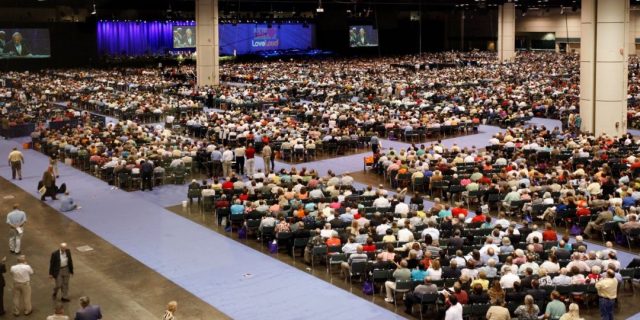The core dilemma facing many pastors today isn’t what style of music we use in worship, dealing with challenging people or responding to the shifting moral standards of our nation. It’s something more basic–how to keep our congregations focused on the big picture.
Almost every pastor I know wrestles with the same tension between institutional maintenance and missional investment. Institutional maintenance is a cumbersome phrase but simply means the time, energy and resources necessary to keep the institution going. And it takes a lot. Committee meetings. Conflict resolution. And the various “developments”–staff, budget and organization–that while never fully completed can’t be neglected.
Missional investment on the other hand is the time, energy and resources necessary to fulfill the mission of the church. There’s no argument about what that is because all of us–at least in evangelical churches–can quote the Great Commission in our sleep. In fact, the reason most of us went into ministry in the first place was because we wanted to see people come to faith in Jesus. Mission lies at the heart of our call.
At least in theory. The truth is that the institutional demands of the congregation we know are often more immediate and pressing than the spiritual needs of those we don’t know. While I may feel an obligation to share the gospel with my lost neighbor next door, the committee chairman who needs to meet with me is someone I do know. In the tension that follows guess who wins?
I’m using that personal situation just as an example. The truth is that the tension between institutional maintenance and missional investment is played out on the corporate level in a thousand different ways. We assign the most desireable church rooms to the longest-standing church members instead of guests. We devote the lions share of financial resources to meeting the needs of the most loyal portions of the congregation instead of investing in evangelistic initiatives.
Nobody’s really at fault. An overwhelming majority of evangelical churches are filled with godly, sweet and generous people just as the overwhelming majority of evangelical pastors are sincere and passionate about the gospel. It’s just that without constant attention, institutional needs will always trump missional needs. Without intentionality, pastors and congregations alike will lose sight of the big picture.
That’s why I’m in Peru right now. I’ll spend the next few days teaching at the Peruvian Baptist Seminary. Sunday morning I’ll preach in a Peruvian church. Then the larger team that I’m a part of–composed of several younger doctors, nurses and pharmacists–will lead a free medical clinic in an underserved section of this beautiful country. Our church is supporting a church plant here, and we want to do whatever it takes to make it succeed.
We need to do this. Heck, I need to do it. Our church is located in an incredible place and we have an awesome church, but we’re still susceptible to spiritual myopia. My life as their pastor is full and rich…and comfortable enough to dull the edge of my spiritual vision. Times like this–filled with the stress of traveling long distances, the uncertainty of what we’ll encounter and the discomfort of strange food (Lord, protect my stomach!) and accommodations–are essential for modern American churches and the people who inhabit them to stay connected with the lost and broken world.
But it’s not about us. In the end, mission trips like this are of course about the people we go to serve. And maybe that fact alone is enough to keep our perspective where it needs to be.
